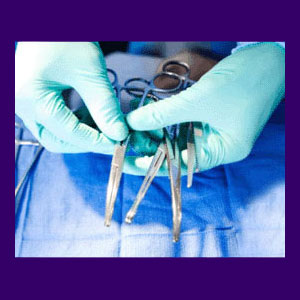
There are more back surgery procedures being performed now then ever before. Both the variety and number of actual surgeries have grown into a huge industry with doctors specializing in individual types of surgical treatments for a host of back pain conditions.
Back surgery is known for its unpredictable results and many patients end up far worse off after surgery than before. Unfortunately for these poor patients, this knowledge comes too little and much too late to change their future. However, all is not so bleak. Some surgeries are indeed needed and do go well. The latest minimally invasive approaches to care are light years ahead of the antiquated fully open operations of the past. There are also many surgical techniques which can be accomplished using the least damaging methods possible, including needles, radio-waves or laser technologies.
This important topical article provides a clear and objective look at the catalog of spinal procedures and their typical therapeutic outcomes.
Types of Back Surgery Procedures
Traditional back and spine surgeries are usually referred to as open procedures. This describes an operation using a large incision in the back and multiple layers of muscle and tissue dissection to reach the actual spine. This type of surgery usually has the worst results, the most side effects and the longest recovery time. Many procedures are no longer done this way, but others are still only available using this antiquated method, especially in less-developed regions of the world.
Minimally invasive surgeries use a number of small incisions instead of one large one. These incisions can be placed in the back, side or even in the front of the body. Tissue is not dissected, but simply pushed aside to allow the insertion of smaller surgical tools and hollow catheters through which the tools can be placed. The procedure is viewed under live x-ray, also known as fluoroscopy, or imaged with fiber optics. These minally invasive procedures leave much less scar tissue and do not cause as much damage to healthy skin, muscle and bone.
Advanced minimally invasive surgeries can be accomplished with radiofrequency, ultrasound or other high tech modalities. In these procedures, there is very little cutting and more treatment by needle, electrode or super thin catheter. Most of these procedures can accomplish the same result as traditional surgeries, yet still allow a comfortable outpatient experience with less chance for suffering serious back surgery complications. If you do need to have surgery, these procedures should be your first choice, if at all possible.
Results of Back Surgery Procedures
Back surgery is the only type of operation in the world that actually has a condition named for its poor results. Failed back surgery syndrome is an epidemic among patients providing huge supporting statistics which demonstrate the need for a complete overhaul of the spinal surgical system.
Some patients suffer no relief from the surgical ordeal and are permanently damaged by their operations. Many patients receive partial relief from the surgery, but often find the pain eventually comes back stronger than before. Still others develop related pain syndromes, also known as back pain substitute symptoms, since their surgical cure was only a placebo.
Only a small percentage of postoperative patients have good long-term results from their spinal surgeries. In these patients, I commend the doctor. The diagnosis was correct and the treatment appropriate. Bravo and well done. Unfortunately this ideal case scenario represents the gross minority of back surgery results in the general back pain patient population.
Back Surgery Techniques
Most spinal surgery is not necessary. For patients who have verifiable physical reasons for pain, conservative care, or even no care at all, will often generate better enduring treatment results than surgical intervention.
However, a great number of patients undergo procedures for conditions which are not even the real reasons for their suffering. This explains why so many surgeries fail and also why many major medical organizations have now warned physicians not to diagnose back pain exclusively based on the structural findings discovered on imaging studies. These medical groups go on to tell doctors that most of the common scapegoats for back pain are indeed innocent of blame, including most disc pathologies, arthritic processes and vertebral alignment issues.
When surgery is used to correct a spinal abnormality and is successful in doing so, yet pain remains, something is obviously wrong. In these incredibly common cases, the continuation of symptoms is usually blamed on some excuse, such as nerve damage, scar tissue or other result of the operation. In a few cases, these theories may be right. In most, however, the reason for surgical failure is simple. The back surgery procedure sought to and actually did correct a condition which did not need correcting. The diagnosis was wrong from the start, leading the patient the wrong way towards treatment.
In order to prevent this fate from befalling you, be sure to work diligently to achieve a correct diagnosis and then be sure that surgery is both needed and likely to be successful before even thinking about it seriously.





